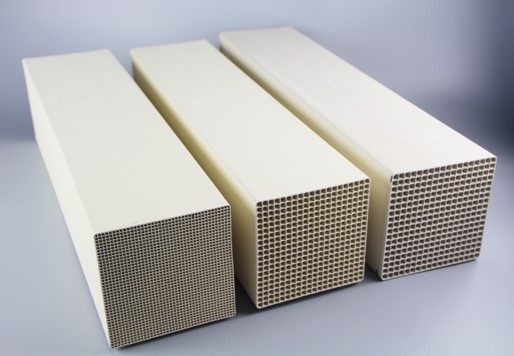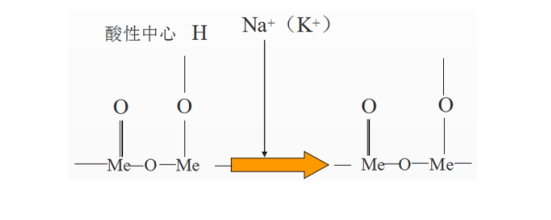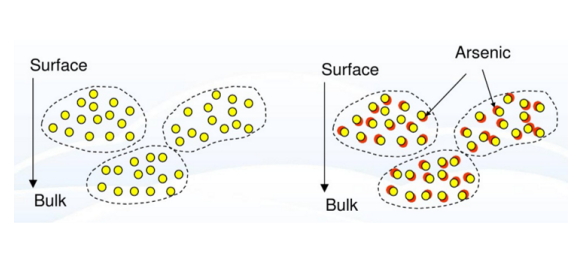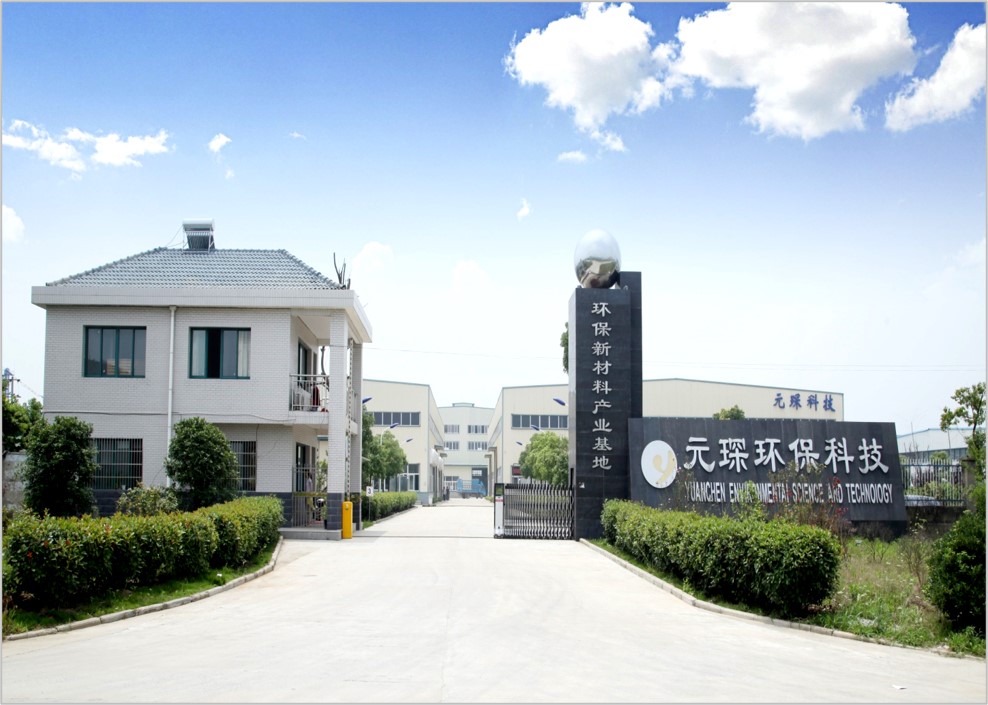
In SCR systems, denitrification catalysts occupy an important position. However, after 2-3 years of use, catalysts fail due to clogging, poisoning, etc., and then need to be replaced with new catalysts.
As mentioned in the previous article, there are many reasons for denitrification catalyst failure, mainly physical factors are analyzed and strategies are given to deal with them. Today we will talk about the influence of chemical factors on catalyst failure.

Chemical factors, i.e., the catalyst absorbs and adsorbs the chemical components in the flue gas, and then the chemical activity of the active components is destroyed or inhibited, resulting in the reduced activity of the denitrification catalyst; mainly including: alkali metal (Na, K) poisoning, alkaline earth metal (Ca) poisoning, arsenic (As) poisoning, SO3 poisoning.
1、Alkali metal poisoning (Na, K)
Alkali metals can react directly with the active components of the catalysts, making the catalyst surface less acidic and reducing the reducibility of the active components, resulting in the loss of catalyst activity.

Response strategy
Fly ash contains certain alkali metal or alkaline earth metal elements, such as K, Na, Mg, etc. The alkali metals mainly cause the replacement of the hydrogen bonding of V-OH in the catalyst, which makes the acidic active site of the catalyst occupied, thus making the catalyst less active. The degree of binding of alkali metals to the active sites is relatively not very large. The formulation can be adjusted to increase the resistance to alkali poisoning by introducing more molecules similar to the V2O5 structure and constructing a sub-center similar to the active center. In addition increasing the ions with large atomic radius in the charge control region of the active center can repel ions of the same charge and prevent the approach of other ions of the same alkali metal charge.
2、Alkaline earth metal poisoning (Ca)
The free CaO in the fly ash reacts with the SO3 adsorbed on the catalyst surface to form CaSO4, which scales on the catalyst surface and prevents the diffusion of the reacting material to the catalyst surface and to the catalyst interior.

Response strategy
Reduce the SO2/SO3 conversion rate by adjusting the operating conditions of the denitrification reaction.
3、Arsenic poisoning (As)
Arsenic (As) poisoning is caused by the presence of gaseous As2O3 in the flue gas. As2O3 is dispersed into the catalyst and solidified in the active and inactive regions, so that the diffusion of the reaction gas within the catalyst is restricted and the capillaries are destroyed.

Response strategy
①In order to alleviate the As poisoning of catalyst, a certain amount of CaO can be sprayed into the flue gas to combine with As for solidifying the harmful element arsenic and reducing the catalyst poisoning situation.
②Perform pore structure adjustment. The diffusion and deposition of gaseous As2O3 in the catalyst is greatly influenced by the pore structure of the catalyst. When producing the catalyst, the pore distribution can be controlled by controlling the degree of homogenization of the pore-forming agent, which can reduce the "capillary condensation" of arsenic oxide in the capillary pores. By treating the large, medium and micro pores formed by the carrier TiO2. Among them, the mesopores are considered to be effective in accommodating arsenic and other toxic substances, and even if some of the pores become toxic, the reactants can still diffuse to the active sites for reaction. Through this process, the activity decay under high arsenic working condition is about 90% of that of fresh catalyst, which indicates that our catalysts of this process have better resistance to arsenic poisoning.
(iii) Perform formulation optimization and upgrading. In vanadium and titanium catalysts, Mo helps to improve the arsenic poisoning ability, and the reasonable addition of MoO3 can improve the catalyst anti-arsenic poisoning ability.
④The presence of SO42- on the catalyst surface can improve the arsenic poisoning resistance. the presence of SO42- can reduce the adverse effect of As2O3 on the acidic sites on the catalyst surface, so that NH3 can easily absorb and be activated on the catalyst surface, thus maintaining better catalytic activity even after the deposition of As2O3.
⑤ TiO2 and silicate molecular sieves were used to make composite carriers. The molecular sieve has rich pore structure and strong acidic surface, which can enhance the catalyst's ability to resist arsenic poisoning.
⑥The adsorption device is added at the dust-bearing end of the catalyst. This adsorption device can pre-sorb the arsenic element and reduce the arsenic content in contact with the catalyst, which can indirectly improve the anti-arsenic poisoning ability of SCR denitrification system.
4、Sulfur poisoning (SO3)
Caused by the oxidation of SO2 in the flue gas to produce SO3, which can react with CaO and the reducing agent NH3 in the flue gas, and the corresponding products cover the catalyst surface and plug the pores.
Countermeasures
1) Doping the catalyst with oxides such as transition metal elements, rare earth metal elements, etc. to control the SO2 oxidation rate <1%.
2) Increase the denitrification reaction temperature.
3) Reduce the loading of vanadium.

Anhui Yuanchen Environmental Technology Co., Ltd (hereinafter referred to as "Yuanchen Technology") is a high-tech enterprise integrating R&D, production and sales of dust removal bags and denitrification catalysts. Over the past sixteen years, Yuanchen Technology has been focusing on the environmental protection field, and now has 4 international PCT, 33 authorized invention patents and 77 invention patents in process, among which many products such as "dust removal and denitrification integrated technology products" have been awarded the Scientific Progress Award of Anhui Province. Our dust removal bags (mainly PPS, PTFE, P84 and composite series filter needle felt) and SCR denitrification catalysts have been widely used in cement, steel, glass kilns, waste incineration power generation, biomass power generation, non-ferrous metal smelting and other industries. In the future, Yuanchen Technology will be guided by "becoming the guardian of global ecological environment", always rooted in environmental protection, and insist on the great cause of guarding the blue sky and white clouds. Leveraging on the national ecological civilization construction pattern, we will continue to deepen technology, optimize management, strengthen brand, refine industry and solidify advantages, and create synergistic value for industry through comprehensive and integrated governance and services.